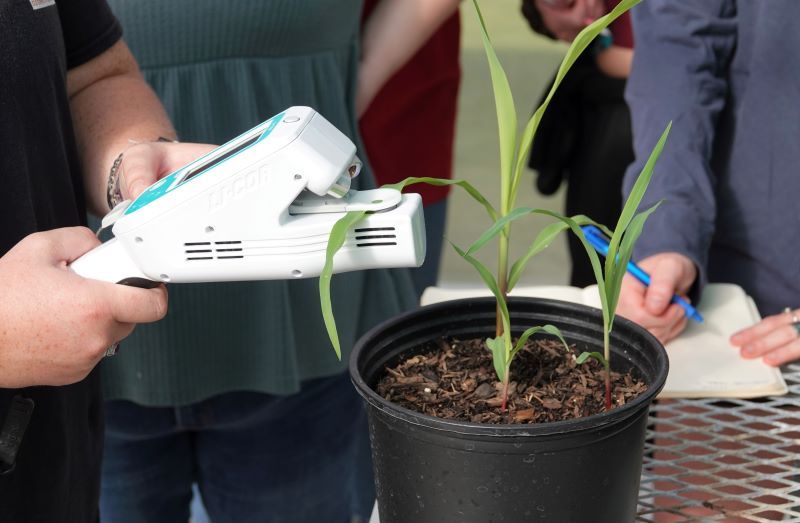
Understanding Plant Anatomy
Understanding the inner workings of plants just got a little easier. Students in BIOL 3400 Plant Anatomy and Physiology, taught by Associate Professor of Biology Dr. Traesha Robertson, will be the first ones at the College to use a LI-COR LI-600 porometer/fluorometer that records physiological measurements of plants. The handheld device provides rapid insights into plant anatomy, such as stomatal conductance and chlorophyll fluorescence, which would have been more challenging to demonstrate otherwise. Stomatal conductance measures the degree of opening of the stomata, and chlorophyll fluorescence is light re-emitted by chlorophyll molecules and is an indicator of photosynthesis in plants.


Students are using the LI-600 as part of the course’s lab, where they are taking a hands-on approach to learn how water stress and loss can impact plant growth. They will be observing corn plants in the College’s greenhouse that are receiving different treatments—from normal watering to the severe drought stage. Students will measure plants’ heights, number of leaves, and any other plant characteristics or problems that may occur in plants. The LI-600 will record physiological data that includes transpiration, leaf temperature and more. At the end of the experiment, the plants will be removed and their root structures analyzed for water stress and loss.

Robertson hopes that with the aid of the LI-600, students will make the connection between the physiology and the actual plant through emerging patterns in the data and their observations. She’s excited about being able to provide more hands-on learning experiences for students through the use of the greenhouse.